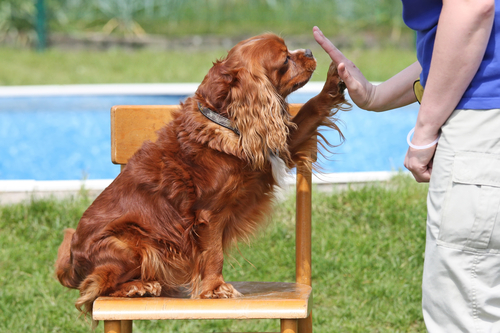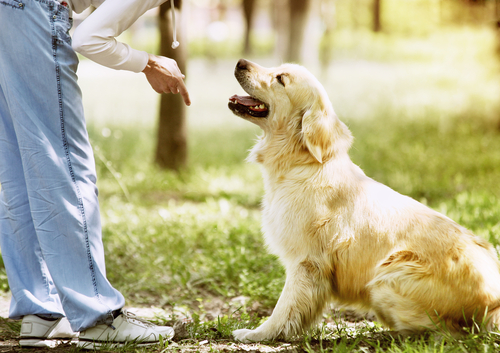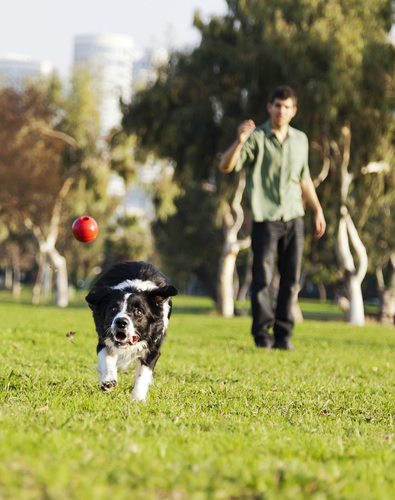Emotions and Intelligence in Dogs

Dogs have the ability to learn, think, and solve problems. According to scientists, breeds such as the Border Collie or Golden Retriever are considered the most intelligent. However, the ability to learn and obey orders aren’t the only parameters that measure intelligence in dogs.
Don’t forget that dogs are capable of learning how to behave around other members of the pack. Adult dogs, for example, correct their young when they do something that isn’t appropriate within their canine world, such as eating out of turn or biting aggressively. In the same way, they also reward them for acceptable behavior either by playing with them, feeding them, or cleaning them.
Intelligence in dogs
Intelligence has a variety of dimensions. In human beings, we could subdivide intelligence into verbal ability, numerical ability, logical reasoning, memory, and so on.
The intelligence of dogs also has several aspects, among which we can recognize three large dimensions. The first is called instinctual intelligence and is related to abilities that determine what it was raised for. For example, if the animal has been bred to herd animals. Their degree of intelligence is measured by their ability to herd animals and how they manage them.
The second dimension of intelligence is called adaptive intelligence. Basically, it refers to the abilities that the dog has to learn things by itself. This type of intelligence can differ between dogs of the same breed. For example, Golden Retriever dogs have the same instinctive intelligence.
However, while most are quite intelligent, perhaps there’ll always be one that seems totally disoriented and makes the same mistakes over and over again. The difference between the different Golden Retrievers is a difference in the degree of adaptive intelligence, which can be measured by using the appropriate tests.
Finally, the third type of intelligence in dogs is related to their ability at work and the animal’s sense of obedience. It’s based on how the dog can come to follow the commands issued by humans.
On the other hand, dog clubs, when they hold a contest, also usually measure that type of intelligence. Through a series of controlled tests, the specialists observe the performance of the dogs for long sections and then evaluate it and issue an opinion.
In that sense, it isn’t uncommon for a judge to spend 12 to 20 hours observing and evaluating a dog. In addition, most of the judges are also dog trainers. Therefore, they have ample experience in the behavior of animals.
Can dogs understand us?
Science has shown that some animal species can outperform dogs in certain areas of intelligence. Wolves are better at problem-solving, and certain primates, and even dolphins and elephants, have human-like self-awareness.
This self-awareness is rare in the animal world, and dogs don’t have much of it. But dogs can do something complex that no other animal can do: they can see, hear and read people.
In fact, dogs are the only animals that really study people’s faces. They evaluate the faces of their owners. They do it with intensity. Tests have shown that dogs are far superior to other animals in understanding people’s faces.
This early communication skill is the cornerstone of all forms of culture, including language. The fact that dogs exhibit this ability is a sign of intelligence and sensitivity. And, quite often, they even manage to outperform other animals – for example, chimpanzees.
Without a doubt, the chimpanzee is amazing; in sign language it has a large vocabulary. However, it can’t understand the gaze of a human being as a dog can. And if you don’t believe it, think of your own dog. What does it do when it looks at its leash or one of its toys? They get so excited! And what do they do when they hear you speak? If you say “let’s go for a walk” they’re sure to go bonkers!
All cited sources were thoroughly reviewed by our team to ensure their quality, reliability, currency, and validity. The bibliography of this article was considered reliable and of academic or scientific accuracy.
- Casey, R. A., Naj-Oleari, M., Campbell, S., Mendl, M., & Blackwell, E. J. (2021). Dogs are more pessimistic if their owners use two or more aversive training methods. Scientific Reports, 11(1), 1-8.
- Berns, G. (2017). What It’s Like to be a Dog: And Other Adventures in Animal Neuroscience. Basic Books.
- Cook, P., Prichard, A., Spivak, M., & Berns, G. S. (2018). Jealousy in dogs? Evidence from brain imaging. Animal Sentience, 3(22), 1.
- Correia-Caeiro, C., Guo, K., & Mills, D. S. (2020). Perception of dynamic facial expressions of emotion between dogs and humans. Animal cognition, 23(3), 465-476.

